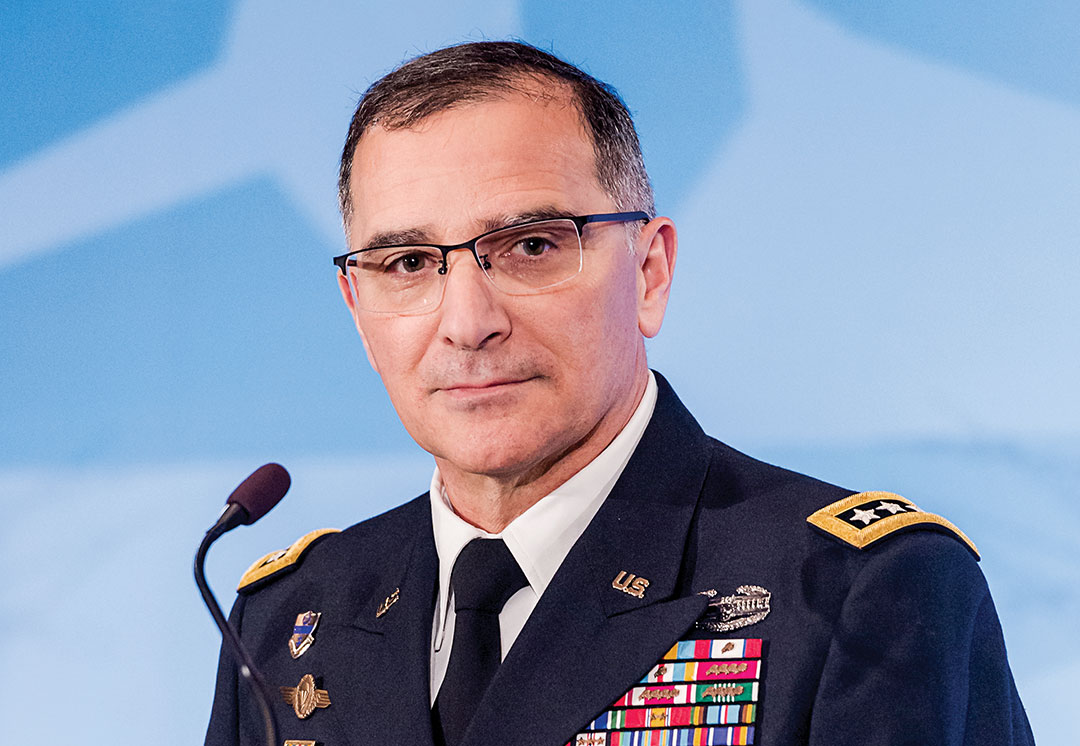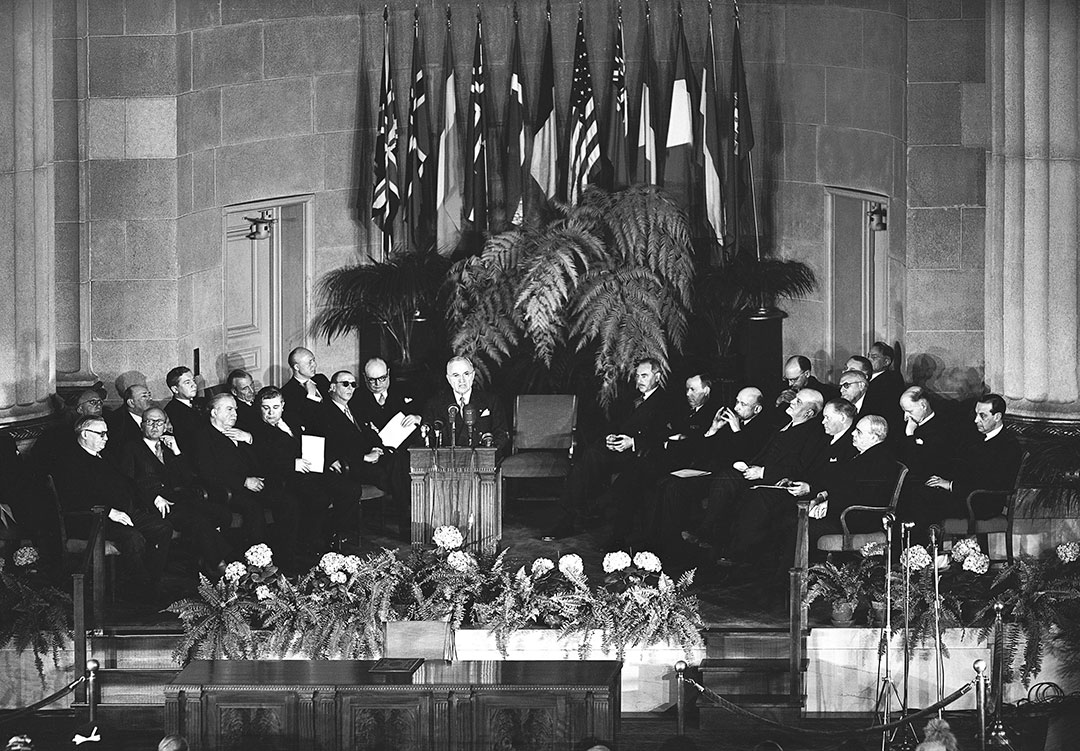NATO evolves and adapts in a complex world
By U.S. Army General Curtis M. Scaparrotti, Commander, U.S. European Command, and NATO’s Supreme Allied Commander Europe

This year, the 70th anniverary of the founding of the North Atlantic Treaty Organization, presents a timely opportunity to reflect on the Alliance’s many achievements while looking ahead to its future. Seventy years ago, leaders from 12 nations gathered in Washington, D.C., to forge a trans-Atlantic agreement that would deter Soviet expansion, foster postwar political stability, and provide for the collective defense of all member states. Allies anchored their commitment through a declaration of solidarity inscribed in the well-known Article 5: “An armed attack against one or more … shall be considered an attack against them all.” This was the start of the most successful alliance in history.
In the decades since its founding, NATO has undertaken a diverse set of missions, operations and activities. These include counterterrorism; train, advise and assist efforts; capacity building; air policing; refugee and migrant crisis response; humanitarian assistance; disaster relief; maritime security; counterpiracy; arms-embargo enforcement; no-fly-zone enforcement; airborne early warning; intelligence, surveillance and reconnaissance; air and naval strikes; and much more. The range of actions undertaken by the Alliance demonstrates its ability to constantly adapt and successfully meet the demands of an ever-changing security environment.
Given the strategic challenges of today’s complex and dynamic environment, the Alliance continues to adapt to remain fit for purpose. NATO nations have recognized that threats to Euro-Atlantic security require a shift in mindset and a change in military posture. In response, over the past five years, Allies have initiated the largest reinforcement of Alliance collective defense in a generation.
The current phase of our ongoing adaptation began at the 2014 Wales summit, as NATO acknowledged that we faced a pivotal moment in Euro-Atlantic security. An aggressive Russia, instability in the Middle East and North Africa, and transnational threats were identified as strategic challenges to a Europe whole, free and at peace. Recognizing these challenges, NATO adopted measures to make Alliance forces capable, credible and responsive. These measures included the establishment of a Very High Readiness Joint Task Force (VJTF) able to deploy land, air, maritime and special operations forces within days, enhancements to the NATO Command Structure (NCS), a revitalized exercise program, and the improvement of tools and capabilities needed to address hybrid warfare threats. The Alliance also agreed to reverse the trend of declining defense budgets and commit at least 2 percent of gross domestic product to defense spending, with 20 percent allocated to major equipment, including research and development.
At the 2016 Warsaw summit, Allies took additional measures to strenghten our deterrence and defense posture. NATO enhanced its forward presence in the eastern part of the Alliance with four multinational, battalion-size battlegroups in Estonia, Latvia, Lithuania and Poland, which now number over 4,000 troops. In the southeast, Allies agreed to develop a tailored forward presence in Bulgaria, Romania and the Black Sea, to include establishing a Multinational Division Southeast Headquarters in Bucharest. The Alliance also declared that its ballistic missile defense (BMD) capability had reached Initial Operational Capability, highlighted by the transfer to NATO of the Aegis Ashore site in Deveselu, Romania. Additionally, the Alliance officially recognized cyberspace as an operational domain that must be defended.
Last year, at the 2018 summit in Brussels, NATO built on the momentum it had established to further progress in readiness, responsiveness and reinforcement, an effort highlighted by the NATO Readiness Initiative, which calls for “4-30s”: 30 major naval combatants, 30 heavy or medium maneuver battalions, and 30 kinetic air squadrons, all ready to fight within 30 days. In the cyber domain, Allies agreed to set up a new Cyberspace Operations Center within a strengthened Command Structure and also to draw on the cyber capabilities of individual nations for operations and missions. The ongoing adaptation of the NATO Command Structure (NCS) will also include an Initial State Peacetime Establishment (ISPE) manning increase, the stand-up of NATO Headquarters Joint Forces Command-Norfolk (JFCNF) to command and control (C2) operations in the Atlantic, and the establishment of the Joint Support and Enabling Command (JSEC) in Ulm, Germany. To address challenges emanating from Africa and the Middle East, NATO created a Strategic Direction South Hub, which reached full operational capability in 2018. Further abroad, in support of the government of Iraq’s efforts to stabilize its country and continue fighting terrorism, NATO launched a noncombat training and capacity-building mission in Iraq, and now has over 250 troops deployed to support this effort.

NATO’s adaptation is demonstrated not only in the many measures and initiatives just outlined, but also in the increased commitments to burden sharing demonstrated by all nations in the Alliance. Every Ally shoulders a portion of our common defense burden, which includes the “three C’s” of cash, capabilities and contributions. Cash — financial investments in defense remain fundamental to the Alliance’s ongoing adaptation, and since January 2017 Allies have added more than $41 billion in increased defense spending over 2016 levels. By the end of 2020, as NATO Secretary-General Jens Stoltenberg has highlighted, Allies are on track to add approximately $100 billion in additional spending. Regarding capabilities, NATO’s Defense Planning Process helps ensure that each nation develops the right combination of weapons and forces to meet its own needs and those of the Alliance as a whole. Each member brings unique capabilities, whether it’s nuclear weapons, advanced fighters, naval warships, reconnaissance planes, missile defense systems or long-range artillery. As for contributions, Allies have stepped up their support for NATO-led operations. Over 22,000 Allied troops are deployed on missions under Kosovo Force (KFOR) in the Balkans, Resolute Support in Afghanistan, the NATO Mission in Iraq, and under the Standing NATO Maritime Forces and Operation Sea Guardian. Across all three C’s, NATO has made remarkable progress.
NATO’s adaptation is underway and we have built momentum. But much work remains. We must continue to strengthen our resolve: to obtain the defense posture we need; to meet the spending targets and adaptive measures we have agreed to for collective defense; to preserve the unity of the Alliance; and to protect freedom, democracy, the rule of law and our shared values. This, in turn, fortifies the international order we have created.
NATO has remained strong and united for 70 years, through numerous evolutions and adaptations. As we continue to adapt, we will find, as we always have, that every challenge is best addressed as an Alliance.


Comments are closed.